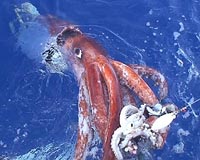 |
London UK (SPX) Feb 16, 2011 If you thought that we know everything about how the flea jumps, think again. In 1967, Henry Bennet-Clark discovered that fleas store the energy needed to catapult themselves into the air in an elastic pad made of resilin. However, in the intervening years debate raged about exactly how fleas harness this explosive energy. Bennet-Clark and Miriam Rothschild came up with competing hypotheses, but neither had access to the high speed recording equipment that could resolve the problem. Turn the clock forward to Malcolm Burrows' Cambridge lab in 2010. 'We were always very puzzled by this debate because we'd read the papers and both Henry and Miriam put a lot of evidence for their hypotheses in place and their data were consistent with each other but we couldn't understand why the debate hadn't been settled,' says Burrows' postdoc, Gregory Sutton. He adds, 'We had a serendipitous set of hedgehog fleas show up so we figured we'd take a crack at it and try to answer the question'. Filming leaping fleas with a high-speed camera, Sutton and Burrows found that fleas push off with their toes (tarsus) and publish their discovery in The Journal of Experimental Biology. 'We were concerned about how difficult it would be to make the movies because we are used to filming locusts, which are much bigger than fleas,' admits Sutton, but he and Burrows realised that the fleas stayed perfectly still in the dark and only jumped when the lights went on. Focusing the camera on the stationary insects in low light, the duo successfully filmed 51 jumps from 10 animals; and this was when they got their first clue as to how the insects jump. In the majority of the jumps, two parts of the flea's complicated leg - the tarsus (toe) and trochanter (knee)- were in contact with the ground for the push off, but in 10% of the jumps, only the tarsus (toe) touched the ground. Sutton explains that Rothschild had suggested that fleas push off with the trochanter (knee), but if 10% of the jumps didn't use the trochanter (knee) was it really necessary, or were the fleas using two mechanisms to get airborne? Burrows and Sutton needed more evidence. Analysing the movies, the duo could see that the insects continued accelerating during take-off, even when the trochanter (knee) was no longer pushing down. And the insects that jumped without using the trochanter (knee) accelerated in exactly the same way as the insects that jumped using the trochanter (knee) and tarsus (toe). Also, when Burrows and Sutton looked at the flea's leg with scanning electron microscopy, the tibia (shin) and tarsus (toe) were equipped with gripping claws, but the trochanter (knee) was completely smooth, so it couldn't get a good grip to push off. Sutton and Burrows suspected that the insects push down through the tibia (shin) onto the tarsus (toe), as Bennet-Clark had suggested, but the team needed one more line of evidence to clinch the argument: a mathematical model that could reproduce the flea's trajectory. 'I looked at the simplest way to represent both models,' explains Sutton. Building Rothschild's model as a simple mass attached to a spring pushing down through the trochanter (knee) and Bennet-Clark's model as a spring transmitting the spring's force through a system of levers pushing on the tarsus (toe), Sutton generated the equations that could be used to calculate the insect's trajectory. Then he compared the results from his calculations with the movies to see how well they agreed. Both models correctly predicted the insect's take-off velocity at 1.35m/s, but then the Rothschild model began to go wrong. It predicted that the insect's acceleration peaked at a colossal 22,000m/s2 (2200g), whereas the acceleration of the insects in the movies only peaked at 1500m/s2 (150g). However, Sutton's calculations based on the Bennet-Clark lever model worked perfectly, accurately predicting the insect's trajectory and acceleration pattern. So Sutton and Burrows have finally settled the argument and resolved how fleas jump. The insects transmit the force from the spring in the thorax through leg segments acting as levers to push down on the tarsus (toe) and launch the 0.7mg animals at speeds as high as 1.9m/s. This work was funded by the Human Frontiers Science Program and the Marshall Sherfield Commission. Sutton, G. P. and Burrows, M. (2011). Biomechanics of jumping in the flea. J. Exp. Biol. 214, 836-847.
Share This Article With Planet Earth
Related Links The Company of Biologists Darwin Today At TerraDaily.com
 Newly Discovered Pheromone Linked To Aggressive Behavior In Squid
Newly Discovered Pheromone Linked To Aggressive Behavior In SquidWoods Hole MA (SPX) Feb 16, 2011 Scientists have identified a pheromone produced by female squid that triggers immediate and dramatic fighting in male squid that come into contact with it. The aggression-producing pheromone, believed to be the first of its kind discovered in any marine animal, belongs to a family of proteins found in vertebrates, including humans. Results of the study appear in the February 10th issue of Curren ... read more |
|
| The content herein, unless otherwise known to be public domain, are Copyright 1995-2010 - SpaceDaily. AFP and UPI Wire Stories are copyright Agence France-Presse and United Press International. ESA Portal Reports are copyright European Space Agency. All NASA sourced material is public domain. Additional copyrights may apply in whole or part to other bona fide parties. Advertising does not imply endorsement,agreement or approval of any opinions, statements or information provided by SpaceDaily on any Web page published or hosted by SpaceDaily. Privacy Statement |